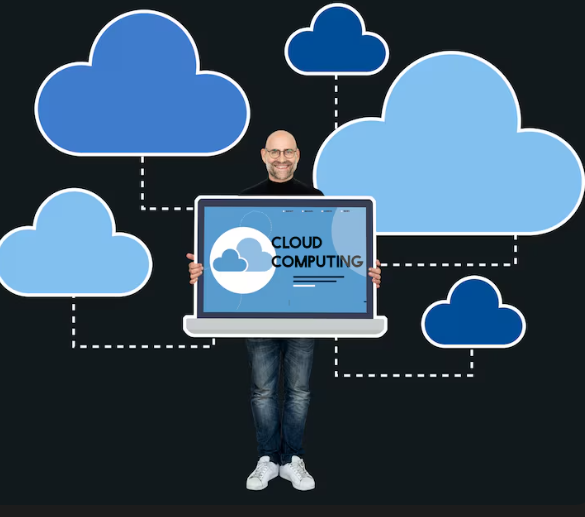Introduction
Cloud computing has transformed the way enterprises operate, enabling greater scalability, agility, and cost efficiency. But as we move into 2025, the cloud landscape is no longer about choosing a single provider. Instead, enterprises are increasingly adopting hybrid and multi-cloud strategies to balance flexibility, security, and performance. These strategies allow businesses to combine private, public, and multiple cloud platforms to meet their unique needs.
This article explores the future of cloud solutions in 2025, focusing on the rise of hybrid and multi-cloud models, why they matter for enterprises, and how organizations can prepare to stay ahead.
The Evolution of Enterprise Cloud Adoption

When cloud adoption began, many enterprises took the “all-in” approach with a single provider such as AWS, Microsoft Azure, or Google Cloud. While this worked initially, companies soon realized the limitations of vendor lock-in, compliance issues, and performance gaps.
By 2023, hybrid and multi-cloud solutions started gaining traction. Now, in 2025, they’ve become a strategic necessity rather than a nice-to-have.
- Hybrid Cloud: Combines public cloud services with private cloud or on-premises infrastructure, giving businesses the best of both worlds.
- Multi-Cloud: Uses multiple public cloud providers (e.g., AWS + Azure + GCP) to optimize performance, reduce risk, and improve resilience.
Why Hybrid and Multi-Cloud Strategies Are Dominating in 2025
1. Avoiding Vendor Lock-In
Enterprises want freedom. Depending on a single cloud vendor can lead to higher costs, limited flexibility, and innovation slowdowns. By spreading workloads across multiple clouds, companies ensure they’re not tied down.
2. Cost Optimization
Each provider offers different pricing and features. Multi-cloud strategies let businesses pick the most cost-effective option for each workload. For example, AI workloads might run cheaper on Google Cloud, while enterprise databases may perform better on Azure.
3. Compliance and Data Sovereignty
With stricter data protection laws in 2025, companies must ensure compliance with local regulations. Hybrid solutions allow sensitive data to remain on-premises or private clouds, while less critical workloads move to the public cloud.
4. Improved Resilience and Uptime
Downtime costs money. Distributing workloads across multiple providers ensures business continuity even if one cloud service experiences outages.
5. Performance Optimization
Geographical distribution of cloud resources ensures low latency and better user experiences, crucial for global enterprises.
Key Trends Shaping Hybrid and Multi-Cloud in 2025
1. AI-Driven Cloud Management
Managing hybrid and multi-cloud environments can be complex. In 2025, enterprises are adopting AI-powered monitoring and automation tools that optimize resource allocation, detect failures, and reduce costs in real time.
2. Cloud-Native Development and Kubernetes
Kubernetes has become the foundation of multi-cloud strategies. By using containerization, businesses can deploy applications seamlessly across AWS, Azure, GCP, or private data centers.
3. Edge Computing Integration
Enterprises in 2025 are combining edge computing with cloud solutions to process data closer to users. This reduces latency, especially for IoT, AI, and real-time analytics.
4. Enhanced Cloud Security Models
Zero-trust security frameworks, encryption by default, and advanced threat detection are now standard. Security is no longer an afterthought but a core pillar of hybrid and multi-cloud strategies.
5. Sustainability and Green Cloud
Sustainability is a major factor in 2025 cloud adoption. Enterprises are selecting providers based on their carbon footprint, renewable energy usage, and eco-friendly data centers.
Benefits of Hybrid and Multi-Cloud for Enterprises
- Flexibility: Choose the right cloud for each workload.
- Scalability: Expand resources on demand.
- Security: Keep sensitive data in private environments while scaling non-critical applications publicly.
- Innovation: Leverage specialized tools and services from multiple providers.
- Disaster Recovery: Reduced risk of downtime and data loss.
Challenges Enterprises Face in 2025
Despite the benefits, hybrid and multi-cloud strategies come with complexities:
- Management Overhead – Handling multiple providers requires skilled teams and advanced tools.
- Integration Issues – Ensuring seamless data transfer between environments is still a challenge.
- Security Concerns – Multiple environments increase the attack surface.
- Cost Management – Without proper monitoring, cloud bills can escalate quickly.
- Talent Shortage – Cloud architects with multi-cloud expertise remain in high demand.
Best Practices for Enterprises Adopting Hybrid and Multi-Cloud
1. Invest in Cloud Management Platforms (CMPs)
Use unified dashboards that monitor, analyze, and optimize workloads across providers.
2. Adopt DevOps and Automation
CI/CD pipelines, Infrastructure as Code (IaC), and automation tools help reduce complexity.
3. Implement Zero-Trust Security
Treat every access request as untrusted, regardless of location, and enforce strict identity management.
4. Focus on Governance and Compliance
Regular audits, compliance checks, and adherence to local laws are essential in 2025.
5. Upskill Teams
Provide training for IT staff on hybrid and multi-cloud tools, security, and best practices.
Real-World Use Cases
- Financial Services: Keep sensitive transaction data in private clouds while using public clouds for analytics.
- Healthcare: Store patient records securely on private infrastructure, while AI models run on public cloud.
- Retail: Use hybrid setups for peak season traffic scaling while ensuring customer data privacy.
- Manufacturing & IoT: Combine edge computing with hybrid cloud to manage real-time factory data.
The Future Outlook: What Enterprises Should Expect Beyond 2025
As technology evolves, enterprises can expect:
- Greater Interoperability: Cloud providers will improve cross-platform integrations.
- Serverless Multi-Cloud Models: Businesses will build apps that run serverless across multiple providers.
- Quantum-Safe Cloud Security: With quantum computing advancing, enterprises will adopt quantum-resistant encryption.
- More Cloud Consolidation: Some providers may merge, offering bundled hybrid/multi-cloud solutions.
Conclusion
By 2025, hybrid and multi-cloud strategies have become essential for enterprises seeking flexibility, resilience, and compliance. While challenges exist, the benefits outweigh the risks, especially when backed by strong governance, automation, and skilled teams.
The future of enterprise cloud lies not in choosing one provider but in leveraging the strengths of many. Organizations that embrace hybrid and multi-cloud models today will be well-positioned to thrive in 2025 and beyond.

